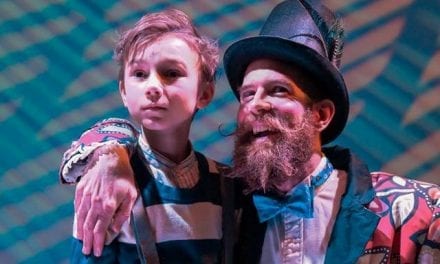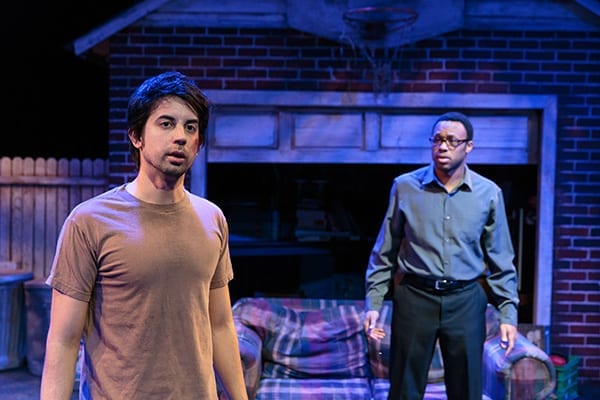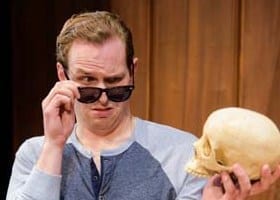HOLLADAY — The one man show Vincent, written by Leonard Nimoy (yes, THAT Leonard Nimoy), was adapted from the original play Van Gogh by Philip Stephens. Vincent quickly eclipsed it, probably because the author was . . . well . . . Spock. Along with the play, he heavily relied on the original letters from Van Gogh to his brother Theo (pronounced TAY-oh) and the play is essentially Theo’s eulogy of Vincent, with intermittent flashbacks into the artist’s life.
The correspondence between Theo and Vincent became a window into their world and a chance to see the real Vincent, or rather, Vincent as his beloved brother Theo saw him. Theo lovingly describes Vincent’s desire to paint what he felt, for his subjects to transcend through his impression of them, and his passion about forming an artist’s union to protect them from art brokers which, ironically, was Theo’s profession.
For this production, the task of portraying Theo was undertaken by Dr. John Newman, a local actor and school teacher. and though, at times, the show felt strangely lecture-esque (though, largely due to the fact that it was a one man show that featured slide projections of Van Gogh’s work, so…naturally). The set was simple and consisted of an art table equip with paint brushes and (of course) sunflowers. There was a podium in the middle of the stage which is where Newman spent most of the show (which added to the lecture motif). The good doctor imbued Theo with personality, and cleverly used the paintbrushes on the table as props whenever one was called for in a scene.
The story was very interesting and took the audience through Vincent’s life, which provided insight into one of the 19th century’s most famous artists. I was unaware the Van Gogh had only sold one of his paintings in his lifetime, and I had also always been under the impression that he was mad, and spent the majority of his life in an asylum. After this production, I see Van Gogh as a misunderstood artist, one diagnosed with epilepsy, and who eventually took his own life to relieve the financial stress placed on Theo. Van Gogh only found solace in the confines of a mental institution and admitted himself to get away from the pressure and taunting around him. It was in his last 70 days of life, and in such solace, that he was able to produce over 100 pieces of art, many of his which are his most famous.
Even though the production may have lagged at times, the second act resonated as Theo described his brother in the last days of his life, and the audience could sense that Theo had such a great love an admiration for Vincent. He tells of how he had two births: the Vincent Van Gogh born March 30, 1850 out of joy, but stillborn and buried in the church cemetery, and the Vincent Van Gogh born March 30, 1853. Out of sorrow, Vincent was forced to walk by the tombstone bearing his own name each time he attended church. Love never came easily to Vincent. His first love never returned his affection and Theo describes this rejection as the beginning of the end for Vincent. Throughout the show you get the distinct sense that Theo was really the only one who understood Vincent, even within their family. Oft times Theo describes how he was a liaison between Vincent and his parents, and when Vincent was cut off from his family it was Theo who continued to support him.
The tragedy of it all was that Vincent died believing that he hadn’t accomplished anything. And the tragedy of this production is that it was only one day. So if you didn’t catch it June 19th at the Holladay City Hall you have unfortunately missed your opportunity. If you do get the opportunity again to see a production of Vincent, I highly recommend it. I left feeling enlightened, sympathetic and definitely more educated in the life of Vincent Van Gogh.




